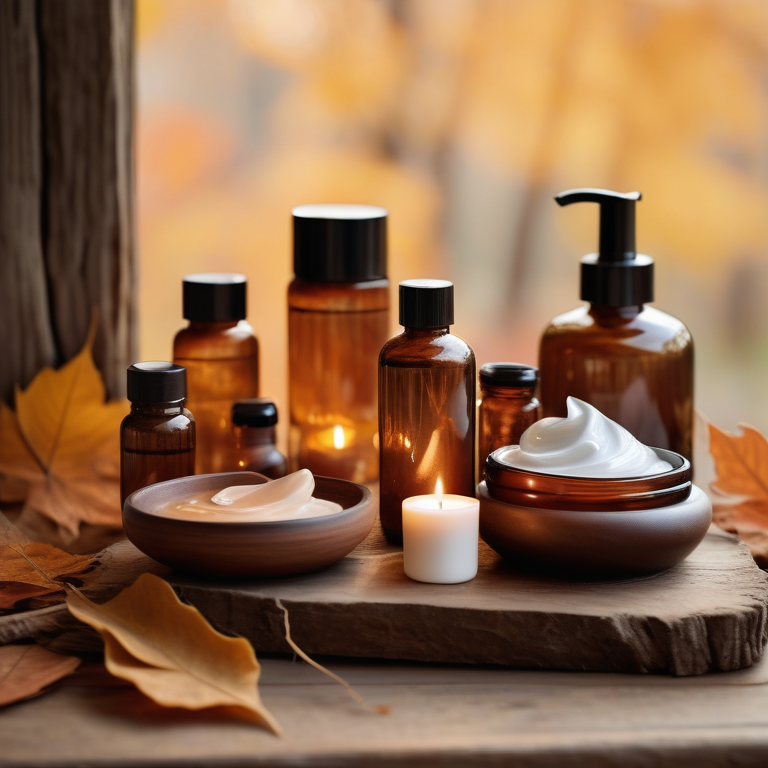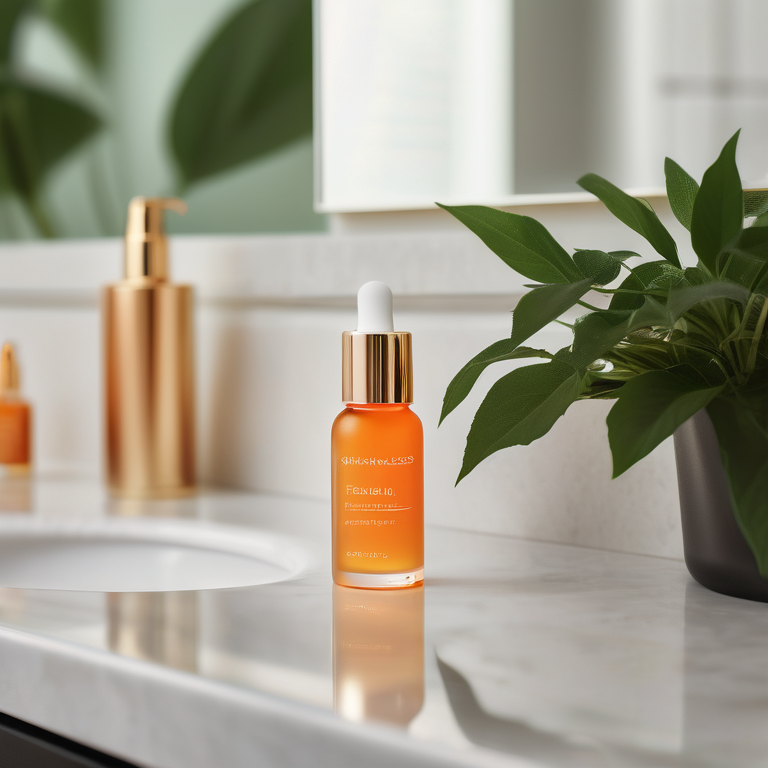Beginner's Guide: Navigating Skin Care Autumn Priorities


Key Highlights
- As the seasons shift, so do our skin's needs. Autumn brings unique challenges, including drier air and harsher weather conditions.
- Transitioning your skincare routine for autumn is essential to combat dryness, sensitivity, and maintain a healthy glow.
- This guide offers simple yet effective steps to adjust your regimen for the cooler months.
- From gentle cleansing and rich moisturizers to targeted serums and sun protection, learn how to best care for your skin.
- Discover how to address specific autumn skincare concerns like dryness and sensitivity.
Introduction
As summer ends and the cool air of autumn arrives, we need to change our skin care routines. The lower humidity in autumn can affect the skin’s natural protective barrier. This may cause dryness, sensitivity, and a dull appearance. It's important to prepare your skin for these changes to keep it healthy and looking good.
Understanding Autumn Skin Changes
During autumn, the air becomes dry. There is less moisture, which causes lower humidity levels inside and outside, especially because of heating systems. This dry air pulls moisture from the skin. This can lead to dehydration. As a result, the skin loses its natural oils. These oils offer a protective barrier. When the barrier is gone, the skin becomes more sensitive to outside stress.
You might notice changes like tightness, flakiness, dullness, and irritation. For people with skin issues like eczema, the dry air in autumn can make things worse. This may lead to flare-ups.
Why Your Skin Reacts to Autumn Weather
Our skin has an outer layer called the stratum corneum. It needs a balance of water and oils to work well. In the colder months, the humidity levels drop. This change can cause problems for our skin.
The dry air pulls moisture away from the skin. Also, cooler temperatures usually make our skin produce less oil. These two effects can weaken the skin barrier. When the skin barrier weakens, it does not hold moisture as well.
A weak skin barrier lets important hydration escape. It also makes the skin more open to irritants, allergens, and inflammation. This is why many people notice more dryness and sensitivity during autumn. They might also have breakouts during this time.
Common Autumn Skin Concerns to Address
Dry skin is a common problem as we move into autumn. The air gets less moisture, causing skin dehydration. This makes your skin feel tight, rough, and flaky. If you don’t care for it properly, the dryness can get worse. It might lead to itching, cracking, or even eczema flare-ups.
Another issue is sensitive skin. The skin barrier often gets weaker during this season. This makes it harder for skin to protect itself. You might react to products you usually use without problems. This can cause redness, itching, and a burning feeling.
It's important to tackle these problems early. Use ingredients that help repair the skin barrier, give intense hydration, and soothe irritation. This will help keep your skin healthy and comfortable all through autumn.
Essential Autumn Skin Care Priorities
As the air gets cooler and the leaves start to change, it is important to change your skin care routine for autumn. You should focus on hydration, protection, and repair.
Adding ingredients like hyaluronic acid, which helps draw moisture to the skin, is key. It's a good idea to use thicker moisturizers. These will help keep the moisture in and strengthen your skin's barrier.
Importance of Hydration and Moisturization
Hydration is very important in autumn. As the air becomes drier, our skin loses natural moisture quickly. To stop dryness and flakiness, we need to add back this moisture. This also helps keep a healthy complexion.
Hyaluronic acid is a great help for this. It can attract and hold large amounts of water, drawing moisture from the air and giving it to the skin. This forms an extra layer of hydration, which keeps the skin looking full and soft.
Using a hyaluronic acid serum followed by a thick moisturizer boosts hydration even more. Look for creams or lotions with occlusive ingredients like ceramides or shea butter. These create a protective barrier on the skin's outer layer, stopping moisture from escaping.
Adjusting Your Cleansing Routine for Cooler Weather
In autumn, it's important to be kinder to your skin when you cleanse it. Strong soaps, especially those with sulfates, can take away the skin's natural oils. This can make dryness worse, especially when the weather gets cooler.
Choosing a mild cleanser, such as cream or oil-based options, helps remove dirt without hurting your skin's moisture balance. Look for ingredients like glycerin that can hydrate your skin. Steer clear of toners with alcohol because they can dry your skin out more.
After you cleanse, your skin should feel clean and fresh, not tight or dry. If your skin feels rough or irritated, this means your cleanser is too strong. It’s time to switch to a gentler choice.
Beginner's Guide to Autumn Skin Care
Changing your skincare routine for autumn is not hard. With a few easy changes, you can shield your skin from the weather and keep it looking healthy and bright.
Here are some steps to help you build a simple and good autumn skincare routine, especially if you are just starting. It is important to stay consistent and pay attention to what your skin needs.
What You'll Need to Get Started
Building a good skin care routine for autumn doesn't need a lot of products. Here are some key items to help you start:
- Gentle Cleanser: Find a sulfate-free cleanser. It should remove makeup and dirt without taking away your skin's natural oils.
- Hydrating Serum: A hyaluronic acid serum works well to boost hydration.
- Moisturizer: Pick a thicker moisturizer than what you used in summer. It will help with dryness and keep your skin hydrated. Look for things like ceramides, shea butter, and hyaluronic acid.
- Sunscreen: Even in cooler weather, sunscreen is still important. Choose a broad-spectrum sunscreen with SPF 30 or higher.
These basic items form a good base for your autumn skin care routine. They focus on keeping your skin hydrated, protected, and repaired.
Step-by-step Guide to Building Your Autumn Routine

Now that you have your autumn skincare essentials, here is a simple routine to follow:
- Morning:
- First, cleanse your face with a gentle cleanser.
- Next, apply your hydrating serum.
- Then, layer on your moisturizer.
- Finally, finish up with sunscreen.
- Evening:
- Start again with the cleansing and serum steps.
- If you want, you can use a richer, overnight moisturizer.
Top Tips:
- Change how often you exfoliate based on what your skin needs. Once or twice a week should be enough during autumn.
- Think about adding a hydrating mask to your routine one or two times a week for extra moisture.
- Listen to how your skin feels and change your routine if needed.
Step 1: Opt for a Gentler Cleanser

As summer ends, one of the first changes to make is to switch to a gentler cleanser. The autumn weather, which has lower humidity, can cause sensitive skin to become dry and irritated.
Strong cleansers used in summer to fight sweat and oil can take away important moisture. This can leave your skin feeling tight, dry, and sometimes itchy.
For autumn, a mild cleanser with hydrating and soothing ingredients is important. Look for products that are sulfate-free, fragrance-free, and made for sensitive skin. These cleansers can clean makeup and dirt without harming the skin's natural moisture barrier.
Step 2: Incorporate a Hydrating Serum
After you cleanse your face, the next step is to use a hydrating serum. This helps you get plump and radiant skin in autumn. A serum with hyaluronic acid can really make a difference.
Hyaluronic acid works like a sponge for moisture. It pulls in and holds water in your skin. This gives you quick hydration and helps make your skin look fuller. It can also lessen the look of fine lines and wrinkles.
Put a few drops of serum on your damp skin after cleansing and before your moisturizer. This helps keep your skin hydrated and creates a smooth base for the rest of your skincare routine.
Step 3: Switch to a Richer Moisturizer
As the weather gets cooler and drier, your lightweight summer moisturizer may not keep your skin soft. Now is the time to switch to a thicker face cream. This cream should protect and nourish your skin during autumn.
Choose moisturizers that have ingredients to hydrate and strengthen your skin. This will help prevent moisture loss and protect against outside factors. Look for ingredients like ceramides, shea butter, and squalane. They work well for this.
Use your moisturizer generously in the morning and at night. This will create a protective barrier against the weather. It can help you keep dry skin and itchy skin away.
Step 4: Don't Skip Sunscreen

While days get shorter and the sun is not as strong, UV rays are still here. These rays can harm your skin all year. Being in the sun, even on cloudy days, can cause early aging, dark spots, and skin cancer.
So, using sunscreen every day is a must, for autumn and winter too. Pick a broad-spectrum sunscreen with SPF 30 or higher. Make sure to put it on all areas of your skin that are exposed, like your face, neck, and hands.
Don't forget to reapply it every two hours. This is especially important if you will be outside. Doing this will help protect your skin all day long.
Special Considerations for Autumn Body Care
Our face isn’t the only part that needs special care in autumn. The skin on our body can also get dry and irritated because of the weather change. It is important to include your skincare routine below the neck for better skin health and comfort.
Use body care methods that focus on gentle exfoliation. This will help to get rid of dead skin cells. Also, use heavy lotions or creams with helpful ingredients like shea butter, coconut oil, or hyaluronic acid. This will help to fight dryness and keep your skin soft and hydrated throughout the season.
The Importance of Body Exfoliation
As the weather gets cooler and the humidity lowers, our skin slows down the process that replaces old cells. This can cause dead cells to build up on the skin’s surface. When this happens, the skin might look dull, rough, and more likely to get dry.
Exfoliating the body regularly is very important in autumn. It helps remove these dead cells and makes the skin smoother, brighter, and healthier. Also, getting rid of dead cells allows your moisturizers and body treatments to work better.
You should pick a gentle exfoliating scrub or a chemical exfoliant with alpha hydroxy acids (AHAs). Good options are lactic acid or glycolic acid. These can help take off dead skin cells without removing the skin’s natural oils.
Nourishing Your Skin with Body Oils

In addition to regular exfoliation, using body oils in your autumn routine can really help with hydration and dryness. Body oils are great for adding natural moisture to your skin and creating a protective barrier against losing more moisture.
Look for oils that have essential fatty acids and antioxidants like argan oil, jojoba oil, or rosehip oil. These oils are very nourishing. They can soothe irritation, reduce inflammation, and give your skin a healthy, radiant glow.
After you shower or bathe, apply body oil to damp skin. This helps to lock in moisture and lets your skin absorb the oil better. You can also add a few drops of body oil to your bathwater for a more luxurious and hydrating experience.
Conclusion
Transitioning your skincare routine for autumn is important. This helps your skin stay healthy and glowing as the seasons change. Focus on hydration, moisturization, and gentle cleansing to take care of common autumn skin issues. Remember to care for your body, too. This includes exfoliation and using nourishing oils. By following these steps, you can keep your skin looking radiant all fall season. If you want more skincare tips and updates, subscribe to our newsletter. You will get exclusive content for your autumn skincare needs. Start your autumn skincare journey today!
Frequently Asked Questions
How often should I moisturize in the fall?
In cooler weather, dry air can take away moisture from your skin quickly. It is usually best to moisturize twice a day, once in the morning and once at night. This helps to add hydration back to your skin and keep a healthy skin barrier.
Can I use the same sunscreen as I did in summer?
Yes, you can keep using your summer sunscreen. Harmful UV rays are still around even in autumn weather. It's very important to apply a broad-spectrum sunscreen with an SPF of 30 or higher every day. This will help maintain your protective barrier and stop sun damage.
What are the signs my skin care routine needs adjusting for autumn?
If your skin feels tighter, drier, or more sensitive as the seasons change, your routine may need some changes. You might also notice a dull skin tone, flakiness, or more irritation. This is especially true for people with dry skin or sensitive skin types.




